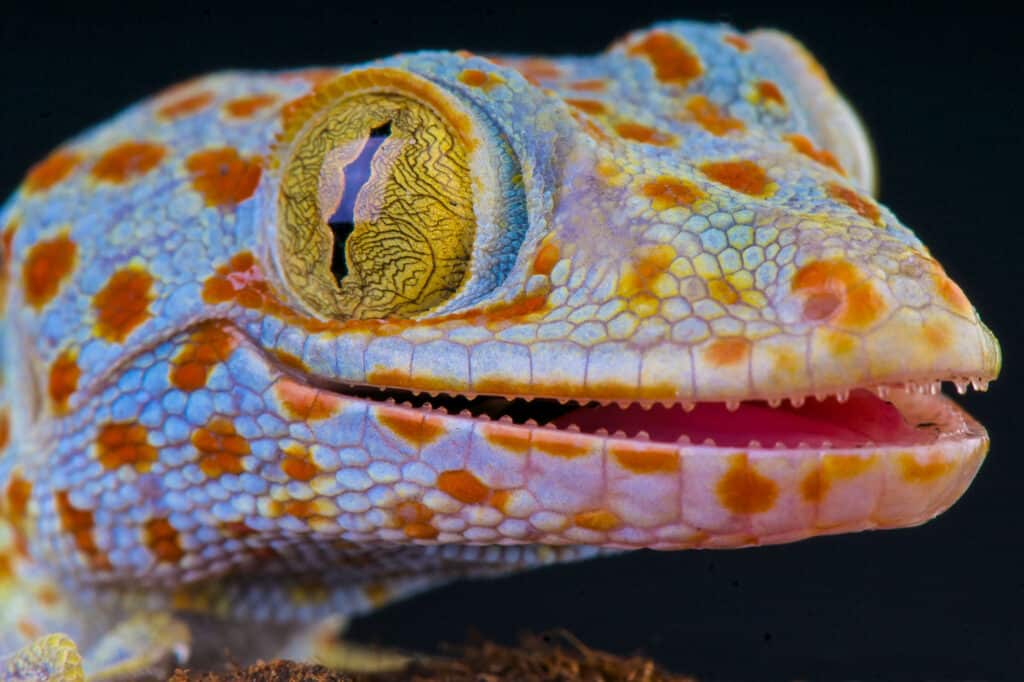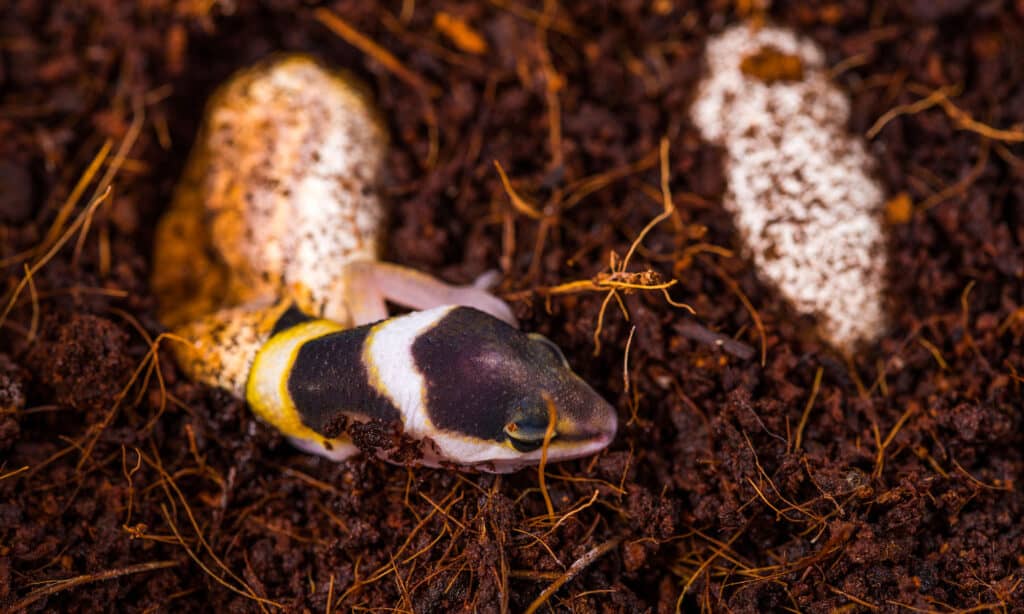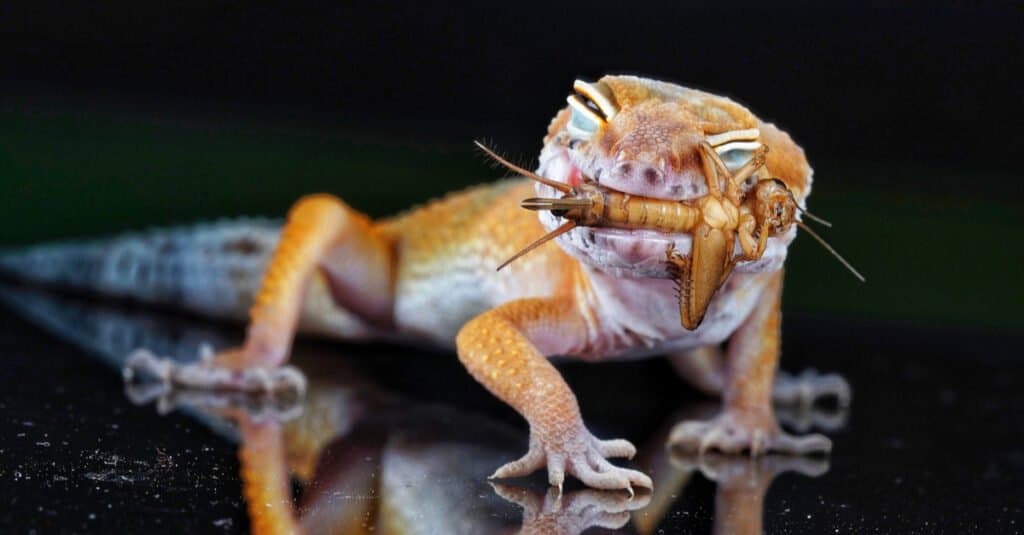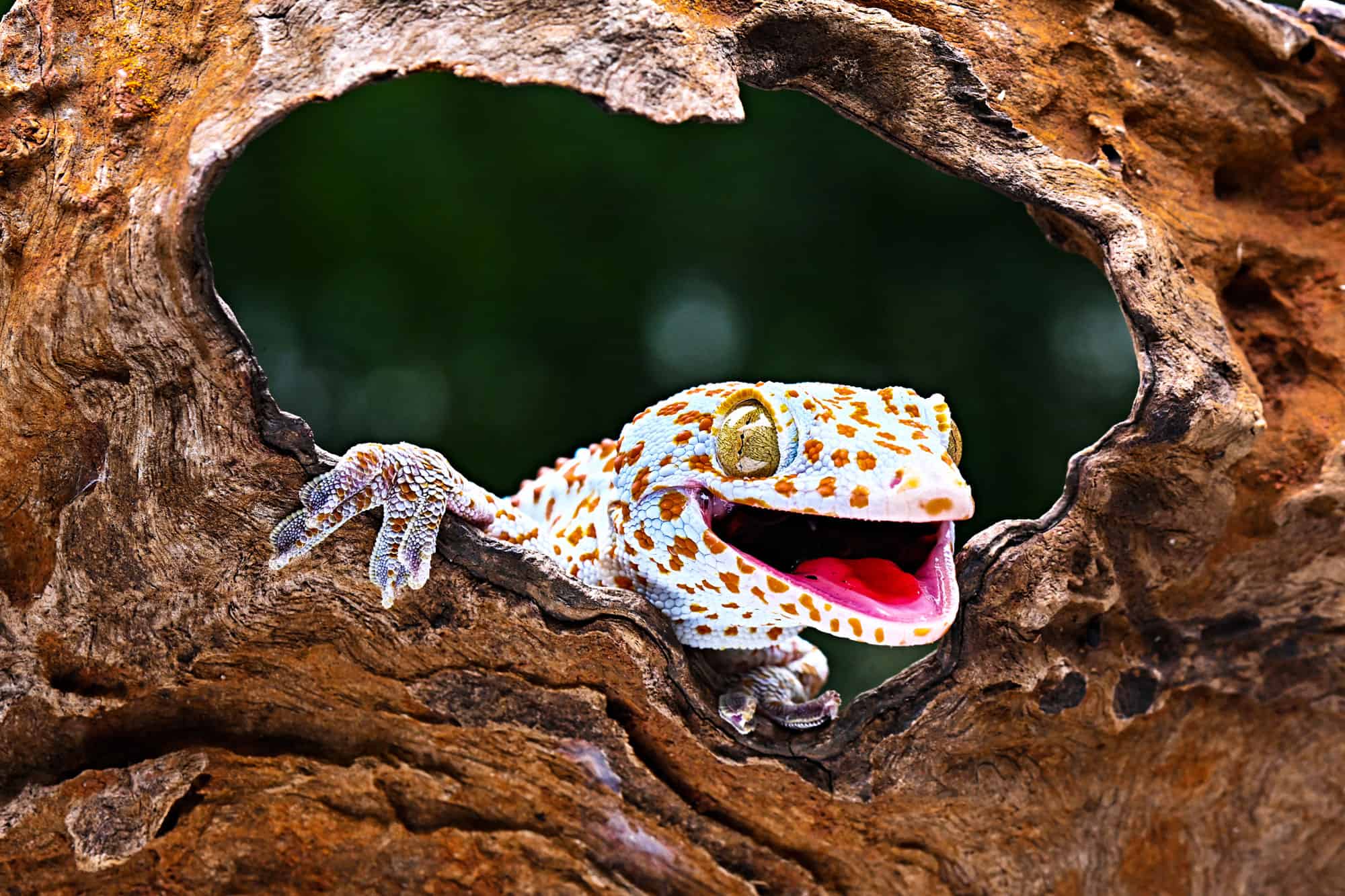Geckos are small, primarily carnivorous lizards with a wide distribution, found on every continent except Antarctica. They belong to the taxonomic group of squamate reptiles. The term squamate is derived from the Latin word squamatus, which means ‘scaly’, although these animals do not have scales. Despite not being very gregarious creatures, these reptiles have a highly developed vocal communication system compared to other lizards. Different species’ enormous physical diversity reflects how they have evolved to adapt to their particular surroundings.
Geckos are typically nocturnal, having superior night vision compared to most reptiles and 350 times more sensitive color vision than human eyes in low light. Numerous species are also well known for having unique toe pads that allow them to quickly grab and climb up smooth, vertical surfaces and cross interior ceilings. Though they can be classified as small lizards, they are still different in many ways. Keep reading to find out whether or not they have the same teeth as lizards and if they use them the same way.
How To Identify Geckos
Geckos have different colors, depending on the species. Most are gray or brown, which helps them blend in with the surrounding rocks, sand, and dirt. Species-to-species variation is also seen in the form and morphology of their tails. While some are short, blunt, or even spherical, some are long and tapering. They have evolved to lose their tails when pursued by predators. The animal’s tail grows back after this takes place. Since their tails have their nerve control center, they can move and lunge on their own for up to 30 minutes after they separate from the body. Millions of tiny, soft-touch spines that resemble hair are also embedded in their skin. The gecko’s skin is protected from dust and other airborne contaminants by these spines.
Do Geckos Have Teeth?

Geckos typically have between 50 and 100 teeth.
©reptiles4all/Shutterstock.com
There are over 2000 species of geckos that exist in the world today and all of these species are carnivorous. Because of their dietary choices, geckos have teeth that have evolved to help them chew food properly before digesting it. Their teeth are tailored to their particular eating style as well as for self-defense and hunting. The premaxilla, maxilla, and dentary bones of the upper and lower jaws of most geckos are lined with rows of tiny, conical teeth.
The number of teeth on the other bones changes as a result of periodic tooth loss and regrowth; the premaxilla has between nine and thirteen teeth, depending on the species. Typically, upper jaws have more teeth than lower jaws do. With some exceptions, geckos typically have between 50 and 100 teeth. The leaf-tailed gecko has more than 300 teeth for unknown reasons, which is possibly the most of any terrestrial vertebrate.
Are Geckos Born With Teeth?

Geckos emerge from their eggs with fully formed teeth.
©Spok83/Shutterstock.com
Unlike many animals, geckos emerge from their eggs with a complete set of at least 100 teeth. Geckos are born with fully developed, exposed teeth that gradually fall out and grow back throughout their lives. The replacement teeth grow out automatically.
Geckos always have healthy teeth because they develop beneath the jaw’s surface until they push through the tissue and displace the natural teeth. Tooth regeneration is essential to geckos’ survival because they rely on adequately working teeth for eating and protecting themselves from predators.
How Do Geckos Use Their Teeth?

Geckos catch, squish, and kill insect prey using their teeth.
©Vip_sstock/Shutterstock.com
Geckos do not chew their food despite having a large number of teeth. They swallow their food whole, just like other reptiles. Their teeth are not exactly aligned to permit shearing, slicing, and grinding. Instead, they catch, squish, and kill insect prey using their teeth. They use their tongues, jaw muscles, and head motions to drive whole insects down their throats. They may not use them to chew, but geckos utilize their teeth for other purposes. Let’s explore some of them below.
1. Hunting
One of the primary functions of a gecko’s teeth is for hunting prey. Like most lizards and reptiles in general, geckos tend to eat a largely carnivorous diet. Nevertheless, some species, especially young geckos, are more likely to be omnivorous, meaning they consume both plant and animal matter. Geckos are also not known for being picky eaters; they will consume nearly anything smaller than themselves. In other words, they often consume creatures that are readily available in their surroundings.
A gecko may shoot out its long, sticky tongue to capture its prey once it gets it in sight. Similar to a frog’s tongue, a gecko’s tongue is long, flexible, and covered with sticky saliva. A gecko may also catch its prey with its mouth alone, using its teeth to bite and hold onto it rather than utilizing its tongue.
2. For Self Defense
Geckos are typically gentle creatures, but if attacked or provoked, they use their teeth to bite people, predators, and even fellow geckos. Although they are known to bite other smaller predators and sometimes even larger ones, these reptiles do not bite humans as much. Instead, they run away to avoid confrontation.
Geckos are prey to many animals in the wild. For this reason, these animals are genetically wired to avoid larger animals. However, they still fall victim to some of them once in a while. For small, defenseless reptiles, the ability to defend oneself is essential.
3. For Shedding Skin
When they are not hunting prey or fighting other geckos to secure their territory, geckos use their teeth to shed their skin. Geckos go through numerous annual skin-shedding cycles. They remove the old skin from their bodies with their teeth, usually eating it because it is rich in beneficial nutrients. The process of shedding their skin is stressful, however, using their teeth makes it a little easier.
Up Next:
Flounder Teeth: Everything You Need To Know
Why Do Geckos Lick Their Eyes?
Thank you for reading! Have some feedback for us? Contact the AZ Animals editorial team.








